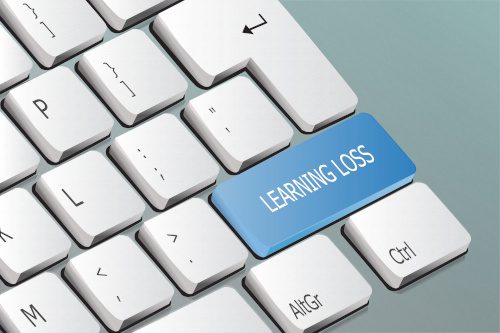Since the pandemic started, teachers and students have had to transition from brick-and-mortar classrooms to virtual environments, and back. During this time, learning loss–the reversal of academic progress due to disrupted formal education–has been of significant concern to educators. Unfortunately, studies show that English Language Learners (ELLs) have been disproportionately impacted by learning loss, as compared to their peers.
According to the OECD, school closures and distance learning measures have put ELLs at a greater disadvantage compared to the general student population. A learning gap, which existed prior to the pandemic, is widening across the United States. At the same time, the demands of virtual and hybrid learning have put incredible strains on teachers throughout the pandemic.
This issue has become a point of controversy for English as a Second Language (ESL) teachers, who do not feel the term ‘learning loss’ accurately describes the complex situation faced by ELLs in America.
I can understand their perspective, because even before the pandemic, ELLs enrolled in U.S. schools grappled with disproportionately lower academic outcomes, as well as higher dropout rates. This created a learning gap that, due to COVID-19, is only continuing to grow. I believe this gap, combined with the strain placed on teachers during the pandemic, creates a perfect storm. The issue is that inequities continue to grow while there are more teachers facing burnout and there are fewer left to solve the problem.
A recent study conducted by the University of Chicago found that when ELLs are given effective resources, they can match, and even exceed, their fellow native English-speaking peers in terms of academic achievement. From my perspective, the issue of inequity comes from an institution’s inability to support ELLs and their teachers.
The issue of learning loss resulting from the pandemic is apparent but there are ways to overcome it. The first priority is to provide teachers with the support they need to effectively address the issue. Now more than ever, we need to help teachers by providing them with technology that is designed to save them time rather than replace them. Furthermore, ELLs need access to supplemental learning opportunities (such as online ESL tutoring).
To better represent the varied perspectives that exist around learning loss resulting from the pandemic, I gathered the voices of two educators to flesh out some of the different opinions that exist.
- Are substitutes the answer to the teacher shortage? - June 13, 2023
- Preparing for ransomware attacks begins with education - June 13, 2023
- How to use UDL-inspired technology to reengage students - June 12, 2023

